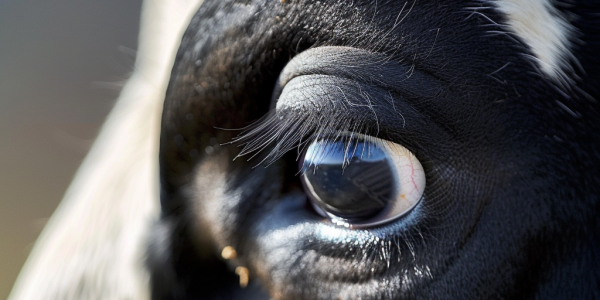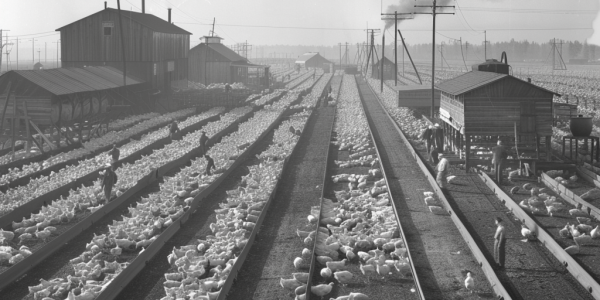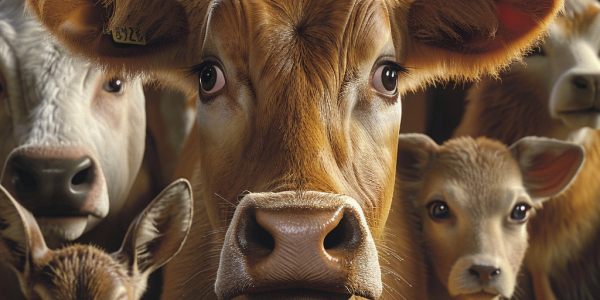Agribusiness Industry Silent on Threat of Bird Flu
A recent study reveals the alarming contagiousness of bird flu, with concerns rising about potential transmission to pigs and humans. Despite reassurances, industrial animal agriculture poses a significant risk for disease amplification. Urgent veterinary interventions and preemptive vaccination are needed to mitigate the threat, as agribusiness lags in implementing necessary measures to prevent a potential pandemic.
Alarming Spread of H5N1 Bird Flu Virus Across Mammals
Recent studies have revealed the concerning spread of the H5N1 bird flu virus, with cases of mammal-to-mammal transmission and human infections. Efforts to ensure food safety and monitor the virus’s survivability in different contexts are underway, highlighting the global impact of the outbreak.
HHS Advances Plan to Produce 4.8 Million H5N1 Vaccine Doses
HHS is moving forward with a plan to manufacture 4.8 million doses of the H5N1 avian flu vaccine, ensuring uninterrupted production of seasonal flu vaccines. Discussions are ongoing with Pfizer and Moderna for potential involvement in the vaccine development process. A recent surveillance study revealed the prevalence of multidrug-resistant infections in US children, with CRE infections less common than ESBL-E infections.
Concerns Rise as Four More Cats Succumb to Highly Pathogenic Avian Flu H5N1
Recent reports reveal that four more cats have succumbed to the highly pathogenic avian flu H5N1, raising concerns about efficient mammal-to-mammal transmission. The total number of feline fatalities now stands at 14 since Spring 2024, with 24 cats falling victim to H5N1 in the past two years. Learn more about the concerning trend and the ‘B3.13 genotype’ emergence in this article.
Investors Eyeing Vaccine Developers Amid Rising Bird Flu Cases
Mounting cases of bird flu in humans are driving day traders to invest in vaccine developers, with CureVac NV and Novavax Inc. experiencing significant stock surges. Moderna Inc. and Pfizer Inc. are also seeing increases as discussions with the US government on bird flu vaccine development emerge. Health-care specialist Jared Holz warns of strong stock reactions and advises caution, as the impact on revenue remains uncertain. Investors are closely monitoring the vaccine industry amidst escalating concerns over bird flu.
Outbreak of Bird Flu in US Dairy Cows Raises Concerns
Recent outbreak of bird flu in US dairy cows raises concerns after Michigan dairy worker becomes second human infected. CDC warns of increasing cases among cows and high virus levels in raw milk. Risk of transmission remains low. USDA requires cows to test negative before transport. Infectious disease expert warns of potential for more cases. Global cases in various animal species highlight need for vigilance in monitoring and controlling virus spread.
Herbruck’s Poultry Ranch Faces Layoffs Due to Avian Influenza Outbreaks
Herbruck’s Poultry Ranch, Michigan’s largest egg producer, faces challenges amid highly pathogenic avian influenza outbreaks. The company’s recent layoff of 400 employees is part of its recovery efforts. With USDA confirming the virus in 10 commercial flocks and nearly seven million birds depopulated, the industry is working to rebuild and safeguard poultry health. Stakeholders are closely monitoring and implementing measures to prevent further spread, impacting the broader poultry and egg production sector in Michigan.
Australia Reports First Human Case of Bird Flu in Child from Victoria
Australia reports its first human case of bird flu in a child from Victoria who tested positive for H5N1 avian influenza. Despite global concerns, authorities confirm no evidence of transmission within Victoria, with the child fully recovering. Avian influenza, primarily affecting birds, poses low risk to humans. Recent outbreak incidents include euthanization of chickens at a separate farm in Victoria. Department of Health reassures public of low risk of human transmission and emphasizes difficulty of human-to-human spread.
Highly Pathogenic H5N1 Bird Flu Detected in Dairy Cattle Across Nine US States
Health authorities in the United States have confirmed the presence of H5N1 bird flu in dairy cattle in nine states, with the virus detected in raw milk samples. While pasteurization makes milk products safe, consuming raw milk is strongly advised against. H5N1, primarily infecting birds, has spread to cows and other mammals, raising concerns. The CDC reports low human transmission risk, with only two confirmed cases in the US outbreak. Occupational exposure remains the highest risk for infection.
Defiant Raw Milk Enthusiasts Risking Health Amid H5N1 Outbreak
Despite warnings from health experts during the H5N1 bird flu outbreak in US dairy cows, raw milk enthusiasts remain defiant. The Raw Milk Institute dismisses concerns as fearmongering, with customers seeking out raw milk from infected cows for supposed immunity. Experts caution against this risky behavior, emphasizing the substantial dangers of consuming raw milk from infected cows and the potential emergence of new, virulent strains. Health authorities advise against raw milk consumption to avoid severe consequences.










